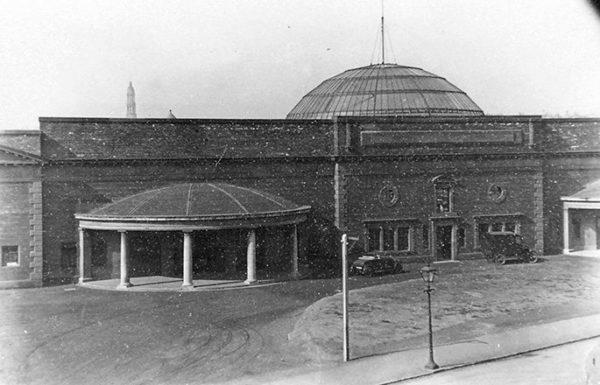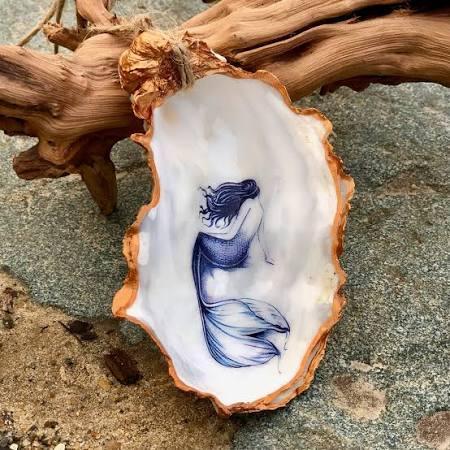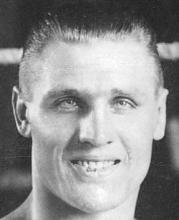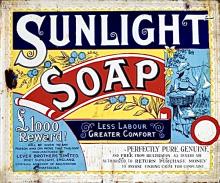
The end is nigh
As 1925 drew to a close, rumours about the future of the Annandale Street Industrial Hall, Edinburgh's first purpose-built exhibition space were confirmed when the proprietors decided to sell the property.
Against all evidence, they insisted that the space was capable of supporting its original commercial purpose.
THE SALE OF EDINBURGH INDUSTRIAL HALL.
The annual meeting of shareholders of the Edinburgh Exhibition Association, who are proprietors of the Industrial Hall, was held in Dowell’s Rooms yesterday afternoon. Mr Patrick J. Pringle,* the chairman of the Board presided.
The report and accounts, which had previously been circulated to all shareholders, were unanimously adopted, and the Board was authorised to take such steps as they might think desirable for the sale of the Industrial Hall.
The proposal was supported by Mr Patrick J. Ford, M.P.,** and Mr Dalziel, both directors of the company, and was moved and seconded by shareholders at the meeting. In the course of discussion it was pointed out that in view of recent and prospective engagements there was every prospect of the hall being run on a profitable basis.
The retiring directors, Mr Patrick T. Pringle and Mr Alexander Pratt were re-elected.
—Edinburgh Evening News, 24 November 1925
*Pringle was the Chairman of the Commissioners for the Harbour and Docks of Leith.
**Ford was the Scottish Unionist M.P. for Edinburgh (1920–23; 1924–35) and was knighted in 1926. He was a patron of the artist John Lavery, who painted extensively in North Berwick while staying as a guest in Ford's weekend home there at Westerdunes.

THE INDUSTRIAL HALL,
ANNANDALE STREET, EDINBURGH.
TO BE SOLD BY PRIVATE BARGAIN.
The SITE on the WEST SIDE of ANNANDALE STREET extends to 12,292 Square Yards or thereby, and has the Hall Buildings erected thereon.
The Site is Central, being only about Five Minutes from Waverley Station. The Road Accesses are good and there are Three Railway Stations adjacent. The Industrial Hall measures approximately 100 Yards Square, and is built of Brick, with a Handsome Red-faced Brick Frontage to Annandale Street. The Floor Is of Cement, and the Roof is Glass and Asbestos Sheeting, supported on substantial Steel Trusses on four Rows of Pillars, giving a 60-Feet Span. The Height is 17 Feet to Girders and 22 Feet 10 Inches to Arches of Roof.
The Main Entrance is from Annandale Street, but there are Emergency Exits on all Four Sides of the Hall. There is an excellent range of Offices, Refreshment, Committee, and Retiring Rooms, with ample Lavatory Accommodation in the Front Buildings. In addition, the Proprietors have an option to Feu the adjoining ground at the back of the Hall, extending to about 4000 Square Yards for extension purposes. the Premises are Lit with Electric Light and there is a Power Circuit throughout.
This Property has been used for Exhibition purposes, but is eminently suitable for manufacturing processes requiring ample Space and good Light, or Motor and Garage Work.
Feu-duty, £283 No Casualties.
Entry at Whitsunday 1926, or earlier, as may be arranged.
Further particulars may be had from W. & W FINLAY, W.S., 55 Frederick Street Edinburgh, to whom Offers should be sent.
—Scotsman, 28 November 1925

Image courtesy of Lothian Buses
SCOTTISH NATIONAL FAT STOCK CLUB.
On THURSDAY FIRST, BY AUCTION at 10 A.M., within INDUSTRIAL HALL, ANNANDALE STREET, a LARGE NUMBER of PRIME BULLOCKS, HEIFERS, COWS, SHEEP, and PIGS from Noted Feeders.
The attention of Buyers of First-Class Stock is specially directed to this Sale.
—Scotsman, 28 November 1925
The annual show of the Scottish National Fat Stock Club followed on 2 and 3 December. The event featured judging of livestock, buttermaking competitions, performances by the Walslade Military Band, judging of carcases in the adjoining Macdonald’s Auction Rooms, more buttermaking competitions and band performances, and the auction sale of carcases.
In December there followed another of the popular entertainments for which the Industrial Hall was now better known than as an exhibition space showcasing the best of British industry.

Industrial Hall Carnival.
The Industrial Hall Carnival, which opens on Monday, is being energetically prepared for, all the paraphernalia necessary being now laid down. A large proportion of the area of the hall is occupied by various riding devices, including the “whirling whales,” a novel round-about arrangemeNt, a cakewalk, “chairoplanes” and other games, while the side shows promise to be more than ordinarily interesting.
For the stage a company has been got together which represents a wide range of special talent. In the securing of them Mr M. B. H. Ibrahim has been mainly instrumental, a large part of his activities being devoted to the “spotting” of rare qualifications practically all over Europe.
World’s Champion Jumper.
The stage programme will be contributed to by Albert Ernesto and Comedian, a couple of Danes, who are assisted by a Swedish girl. Mr Ernesto is the champion jumper of the world, and he will challenge any one up to £250. One of his feats is a forward somersault over a taxi-cab.
Zenora, the originator of “sand dancing” on the hands, will introduce the tango into his performance. The Tassi Toscana troupe, which is one of the foremost acrobatic troupes in Europe, will give a display which will comprise many varieties of somersault. Other artistes will be the Shanghai Trio, including Ma Fu, who was Court entertainer to the Emperor of China; Cara Madge, a well-known rope gymnast; Hicken and Rose, eccentric equiIibrists; and the Three Daimlers, comedy cyclists, with a curious assortment of freak wheels.
Old-Fashioned Circus.
Amongst the side shows a notable one is a circus run in the old-fashioned style. A large corner of the hall has been allotted to the purposes of the circus, which will seat about 300 people, besides allowing accommodation for a serviceable ring for the horses, of which there will be eight engaged. “Egypt” will be another popular resort, where an entertainment will be provided by Kismet, a clairvoyant and thought-reader, who created a great deal of interest during two seasons at Wembley.
A unique feature will be the submarine show, in which by means of illusions visitors imagine themselves descending to the bed of the sea, and will behold strange scenes. The emerging of a mermaid from an oyster shell will be one of the attractions. The Haunted Castle, another side show, is somewhat on the lines of the once popular Pepper’s Ghost. Captain Kettle, who has a place in another department, will be at once recognised as the original of Cutcliffe Hynes’ character.
—Edinburgh Evening News, 12 December 1925
BIG FIGHT FOR EDINBURGH.
DATE OF SCOTT-COOK MATCH FIXED.
It is reported that January 27 has been fixed as the date of the Phil Scott (of London) v. George Cook (of Australia) fight in the Industrial Hall, Edinburgh. The men will fight 20 three-minute rounds for the heavy-weight championship of the British Empire, a guaranteed purse of £l500, and £500 a-side. The promoter, Mr David Smith, of Aberdeen, has allowed each man £100 training expenses.
—Edinburgh Evening News, 16 December 1925
The story of the Industrial Hall is now nearing its end. For the concluding events of 1926, visit this site again on 10 October.



